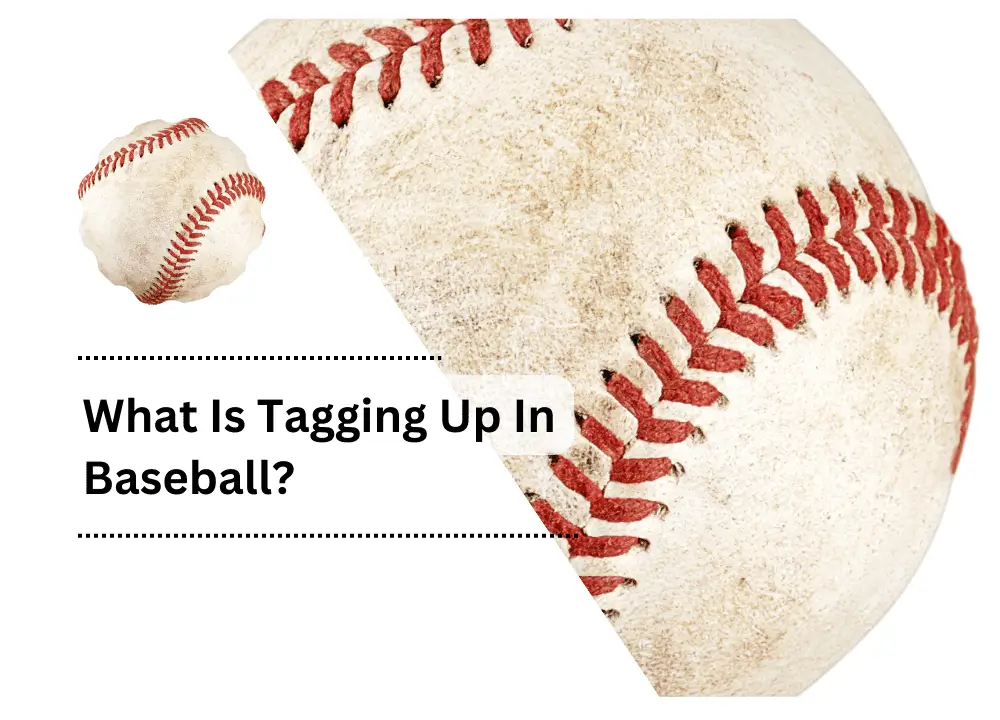
What is Tagging Up?
Tagging up is a fundamental rule in the game of baseball that prohibits baserunners from advancing bases while the baseball is in mid-air. This rule applies when there are fewer than two outs and a batter hits a fly ball, which is a high-hit ball that travels into the outfield. If an outfielder successfully catches the baseball, the baserunner must return and touch the base they were previously occupying.
Once the fielder has made the catch, the baserunner is then permitted to proceed and attempt to advance to the next base. If a baserunner fails to tag up after a fly ball is hit, and the baseball is caught, they are required to retreat all the way back to their previous base before the fielder at that base receives the baseball. Failure to do so will result in the baserunner being declared out.
The rationale behind this rule is that the baserunner is not entitled to advance to the next base since the batter has been declared out and is unable to progress. However, by properly tagging up, the baserunner can take advantage of the baseball being positioned far in the outfield, allowing them to run to the next base safely.
How To Tag Up In A Baseball?
It is crucial to follow a systematic approach to execute a successful tag-up in baseball:
- Acknowledge the likelihood of a fly ball being hit and promptly return to the base you currently occupy.
- Position one foot on the bag while extending the other towards the next base, resembling a poised runner ready to sprint.
- Exercise patience until the defensive player officially catches the ball.
- If there is a runner on the base ahead of you, ensure that the lead runner is also tagging up. If they fail to do so, refrain from tagging up yourself.
- Accelerate towards the next base with the utmost speed, and if necessary, execute a slide to reach the base safely.
What Will Happen If A Runner Does Not Tag Up?
After comprehending the rule, it is imperative to grasp the consequences of runners disregarding it. In general, if the defense appeals to the play, a runner who neglects to tag up correctly will be declared out. Nevertheless, if the defense fails to appeal the play before the subsequent play, the runner will be considered safe.
When Does Tagging Up Not Matter?
Tagging up is a necessary action when there are less than two outs. However, if there are already two outs, the runner typically skips the tagging-up process and directly runs to the next base. In the event that the baseball is caught, the half-inning will conclude, and the base runner’s position becomes irrelevant. Conversely, if the baseball is not caught, the runner will have successfully gained an advantageous position in advancing the bases.
Why the Tag Up Rule?
The implementation of the tag-up rule serves the purpose of preventing runners from gaining an unfair advantage by advancing bases while the ball is airborne. Without the existence of this rule, runners would have the opportunity to easily progress multiple bases while the batter hits a high pop-fly.
Furthermore, the tag-up rule acts to acknowledge and reward the defense for successfully making an out. When the defense catches the ball, they are granted the advantage of forcing runners to return to their respective bases. In the absence of the tag-up rule, the outcome would solely result in an out being recorded, with runners advancing regardless of the actions taken by the fielder.
Effects Of Outs On Tagging Up
Two Outs
In the event of two outs, the circumstances alter. The runners are compelled to advance upon contact, regardless of any considerations. They do not deliberate on whether or not to tag up since the inning concludes if the outfielder successfully catches the ball.
However, if the ball happens to land for a hit, the runner is already advantageously positioned to score effortlessly. If the runner is positioned on second base and the hit turns out to be a minor blooper, the third base coach may opt to retain them at third base if he anticipates that they will be thrown out at home plate.
Less Than Two Outs
When there are less than two outs, the batting team has more flexibility. They can try to advance a runner by hitting a fly ball or a ground ball, knowing that they still have another chance if they make an out. The fielding team also has to be more careful, trying to prevent the runner from advancing while also trying to get out.
The number of outs can also affect the strategy of the batting team. For example, with a runner on third base and less than two outs, the batting team may try to hit a fly ball to the outfield, hoping that the runner will be able to tag up and score. However, with two outs, the batting team might prefer to hit a ground ball, aiming for a base hit to keep the inning alive.
Strategy and Advantages Of Tagging Up
This section will explore the benefits and tactics of tagging up, highlighting its ability to generate scoring opportunities, enhance situational awareness, and empower players to seize chances.
Situational Awareness
The act of tagging up necessitates the player’s situational awareness. They must be cognizant of the ball’s location, the fielders’ positioning, and the ball’s velocity. By possessing this awareness, they can swiftly determine whether or not to tag up. This decision-making ability becomes particularly crucial in closely contested games, where a single run can have a significant impact.
Frequently, a runner’s decision comes down to their intuition. If they have a hunch that an outfielder may not catch a fly ball, they may take the daring step of advancing without tagging up. While this can potentially provide a game-altering advantage, it also carries a substantial amount of risk. If the ball securely lands in the outfielder’s glove, the runner is left vulnerable to a double play.
Scoring Opportunities
Tagging up can be a strategic move that opens up scoring opportunities for the team. By tagging up, a player gains the ability to advance to the next base, potentially putting themselves in a favorable position to score or even successfully score a run from third base. Witness the thrilling moment in this captivating video when Red Sox outfielder Jarren Duran showcases his skills by scoring from second base on a tag-up.
Taking a Chance
Tagging up can provide players with the opportunity to seize chances. By tagging up, players are taking calculated risks, with the potential for a favorable outcome if they successfully advance to the next base. This strategic move can exert pressure on the opposing defense and create scoring opportunities. However, it is important to note that tagging up may not always be the optimal decision.
Various factors, such as the game situation, the number of outs, the positioning of fielders, and even the specific game scenario, can influence whether a runner should tag up. For example, if a team is trailing by a significant margin in the final inning, runners may be more inclined to take risks. Conversely, if the game is tied, they may choose to play it safe.
Conclusion for What Is Tagging Up In Baseball?
Tagging up can happen from any starting point, regardless of the number of runners already on the bases. However, it is crucial to keep in mind that if there are any runners ahead of you, it is essential to ensure that they also intend to tag up. If you are on first base and choose to attempt tagging up, but the runner ahead of you on second base changes their mind and returns to second, you will likely find yourself in a precarious situation known as “no man’s land!
